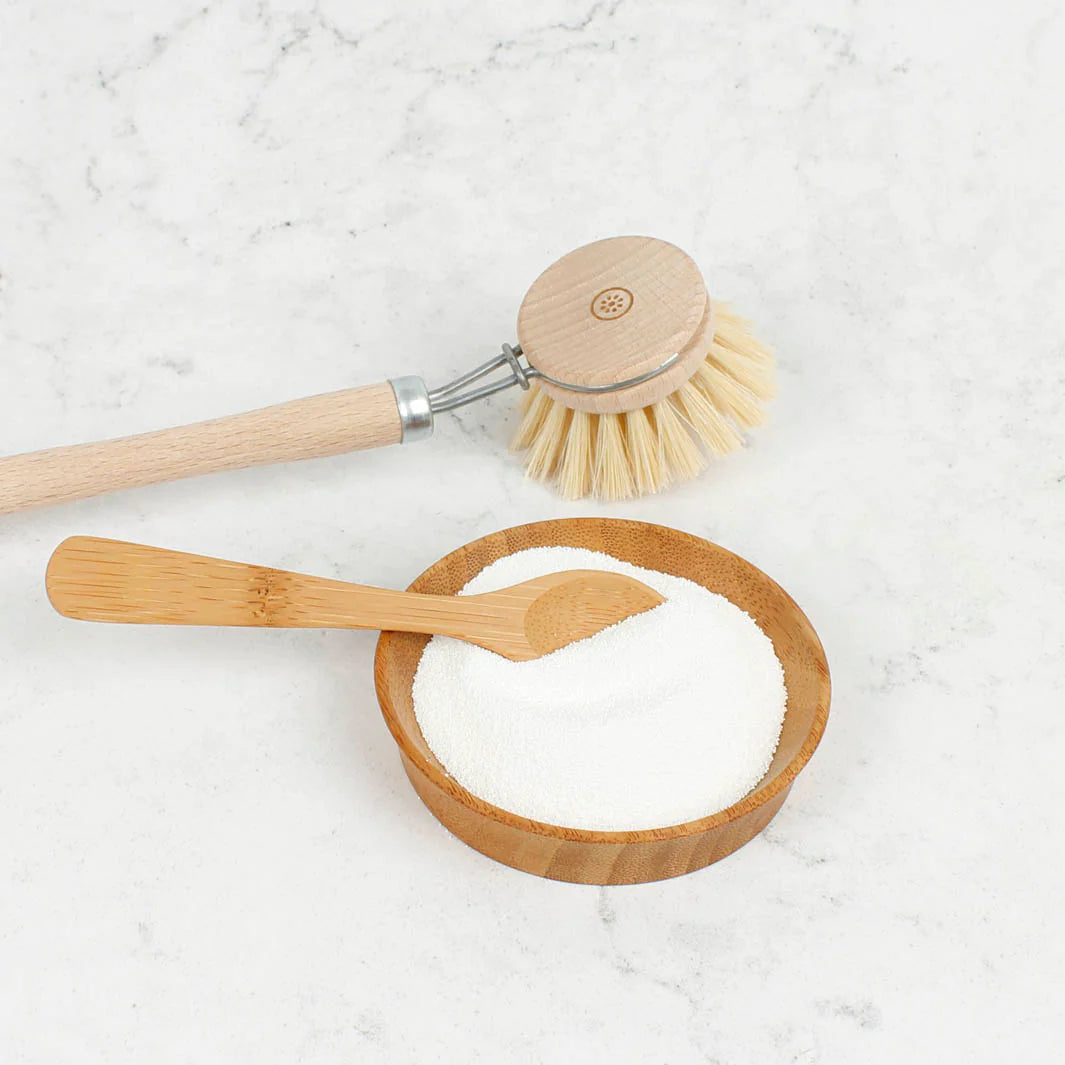Eco-Friendly Ways to Get Rid of Mould
Mould is a type of fungus that can grow in damp places. It can cause a variety of health problems and can also damage your home. With the onset of winter comes ideal conditions for mould to flourish; such as drying your laundry inside and closing windows to keep the warmth in retain warmth.
Mould can spread very quickly, so it’s important to get rid of it as soon as possible. But you don't have to use harsh chemicals to do so. There are a number of eco-friendly ways to get rid of mould.
Different methods are suitable for different surfaces, and you should always test a small area first. Whilst the methods are natural, using the wrong one for a surface can cause damage - for instance, as vinegar is so acidic it can cause marble to start to dissolve. You should also always wear a mask and gloves to protect yourself from mould spores.
All of these methods require a stiff-bristled brush to give the surface a really good scrub, as mould spores can really penetrate the environment it’s growing on. For severe mould infestations, repeat the process one or two more times for complete elimination.
5 eco-friendly ways to remove black mould:
1. White vinegar
White vinegar is an effective natural mould killer as it lowers the PH of the surface making it less favourable for mould growth. It’s also a natural disinfectant. To use white vinegar to kill mould, either use neat or mix it with equal parts water in a spray bottle and spray it on the affected area. Let it sit for one hour then scrub with a brush and wipe clean.
You can also super charge vinegar spray by adding a few drops of tea tree oil (tip 3).
2. Baking soda
Baking soda is another natural mould killer. Like vinegar, it alters the PH, creating an alkaline environment. It is also a mild abrasive that can help to remove mould spore, and it absorbs moisture – this is particularly important as mould needs moisture to grow. To use baking soda to kill mould, make a paste of baking soda and water. Apply the paste to the mouldy area and let it sit for 30 minutes. Then, scrub with a brush and wipe clean.
3. Tea tree oil
Tea tree oil is a natural antifungal and antibacterial agent. It can be used to kill mould and it also helps prevent it from coming back. To use tea tree oil to kill mould, mix 15 drops of tea tree oil with 2 cups of water. Spray the affected area with the solution and let it sit for 60 minutes. Then, scrub with a brush and wipe clean.
4. Oxygen bleach (also known as green bleach)
Oxygen bleach is a non-toxic alternative to chlorine bleach that can be used to kill mould. To use oxygen bleach, mix it with water according to the manufacturer's instructions. Apply the solution to the mouldy area and let it sit for 10 minutes. Then, scrub with a brush and wipe clean.
5. Vodka
Vodka's high alcohol content effectively kills mould spores and prevents their growth. Add equal parts unflavoured vodka and water into a spray bottle, spray the mouldy area and leave for 10-15 minutes. Use the stiff-bristled brush to scrub the moldy surface, dislodging any visible mold residue. Wipe the area clean with a damp cloth.
You can also super charge vodka spray by adding a few drops of tea tree oil (tip 3).
How to prevent mould from growing
The best way to prevent black mould from growing in your house is to control moisture and humidity. Mould spores are everywhere, and they will start to grow if they find a moist environment.
The main ways moisture gets into the house is by humidity from having a bath or shower, cooking and drying your clothes inside. Even breathing brings warm, damp air into the house! The other way moisture gets into the house is through a leak or penetrative or rising damp.
Here are some tips to prevent black mold from growing in your house:
- Ventilate, ventilate ventilate! Open windows and doors whenever possible to allow fresh air to circulate. After each shower or bath, open the window wide, then shut the door. This will prevent the moist air from travelling round the rest of the house.
- Line dry your clothes outside. If you do have to dry them inside, dry them in a well ventilated room with the door shut, or alternatively use a dehumidifier.
- Clean your gutters regularly and fix leaky pipes and roofs promptly as they can provide moisture that mould needs to grow.
- Do a regular mould check around the house so you can treat promptly on discovery.





